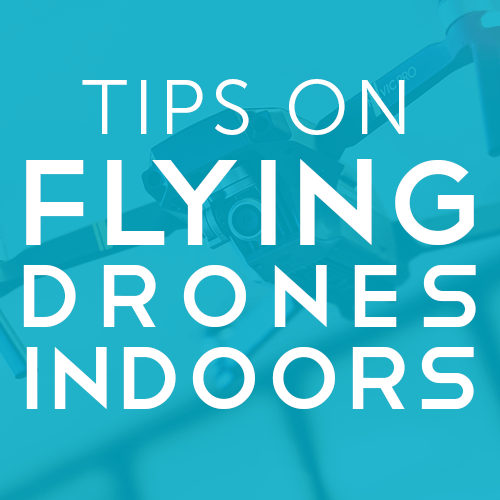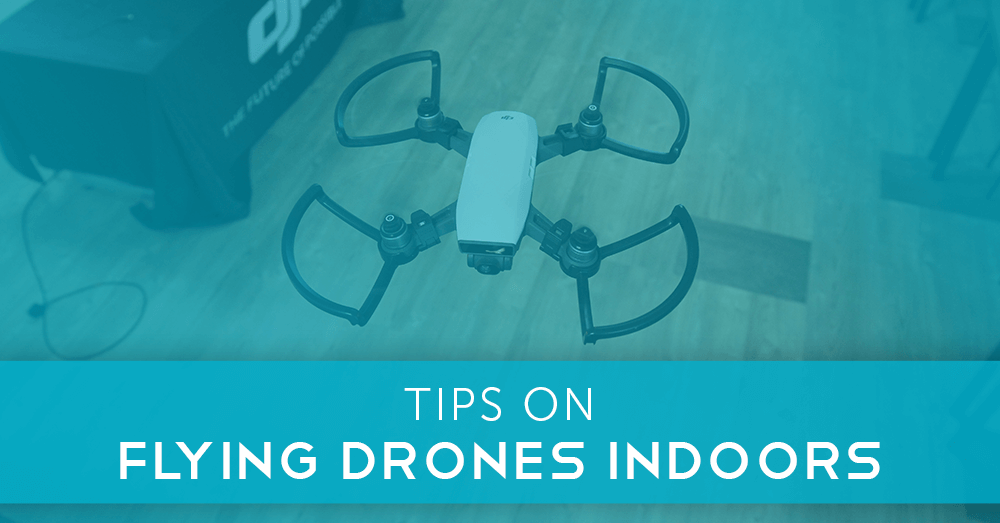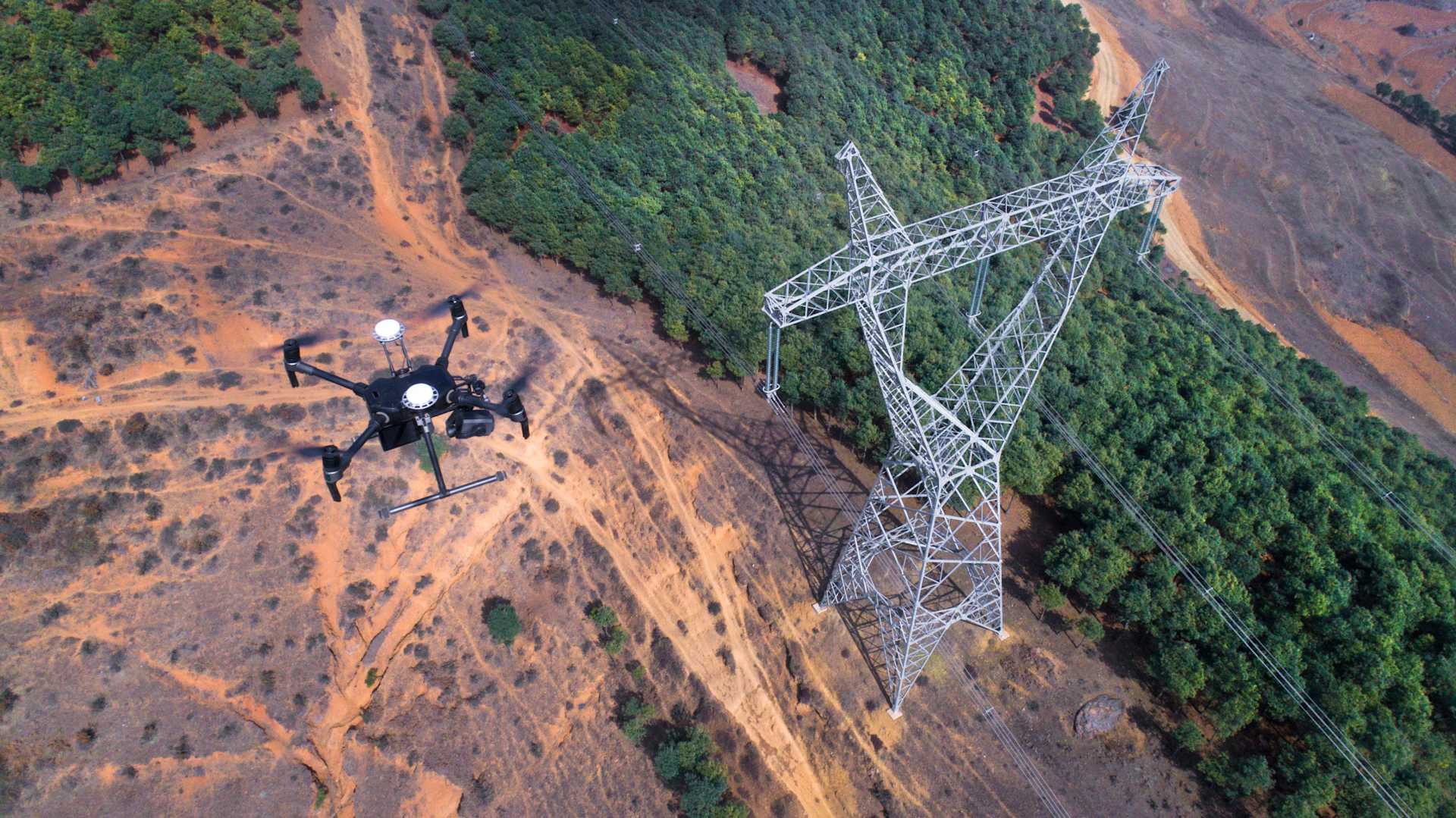
News
Tips on Flying Drones Indoors
Heliguy Insider give their top tips on flying your drones indoors to avoid a drone crash. This includes choosing the right drone, using prop guards & much more. ... Read More

Don’t Fly Indoors Unless Absolutely Necessary
When you first open up your drone, it’s recommended you don’t fly it in your house, even if the conditions outside aren’t suitable. Wait until the weather brightens up or you run the risk of having to have your drone repaired or using your Crash Cover at a very early stage. This applies to both new and experienced pilots, as all drones perform in a different way in use. Even a commercial drone operator will find this a difficult task if they haven't flown indoors before. Flying your new drone in the living room is dangerous and should be avoided at all costs to prevent damage or injury. Wait until you have plenty of experience flying outdoors before taking your drone indoors.
Choose the Right Drone
If you are planning on flying indoors, make sure you’re using the right kit for the job. If you just want a drone to practice flying that’s low risk, a Hubsan will likely be the ideal choice. This little drone can be flown indoors with limited risk in order to get used the mechanics of drone flight. You should still be careful but compared to the DJI drone range the damage will be significantly limited. The new Tello drone from Ryze Robotics (internal tech from DJI and Intel) is also a great option for flying indoors. It’s extremely lightweight limits the damage it can cause, especially when using the prop guards. Like the Hubsan, the Tello could be used to practice your drone flight with a relatively low risk. If you’re looking for a slightly bigger drone from the DJI range with powerful capabilities in a small package, the DJI Mavic Air is our standout choice. Although it’s a similar drone to the DJI Spark, the Mavic Air’s performance when flying indoors is much more advanced. From hands-on experience, we’ve noted that interference is nowhere near as common, helping you retain control when in flight. The camera is also much more advanced, so the footage will likely be more effective for commercial operators. If you have a shot that requires a higher spec, the DJI Inspire 2 performs well indoors if the site is big enough. A great deal of care is required due to the drone’s size; however, minimal interference should be encountered with the Inspire 2. Only use the Inspire 2 if flying in a large building such as a sports arena and be super vigilant to avoid issues.
Start Off Slow and Practice
If you’ve decided that you need to fly indoors, you should build up to it and make sure you’re a competent drone pilot, skilled in all areas of drone flight. Learn how your individual drone acts by getting used to flying outdoors. If available, try to learn how to fly in ATTI Mode as indoor flight will often be in an area without GPS. This is especially applicable if flying in a building with a lot of metal around as the signal is more likely to be lost or interfered with. Build up to flying in smaller spaces in an area where your drone and surroundings won’t be damaged. Get used to the controls in a risk-free area before facing a more complicated flight. If you have access to a flight cage, use it to learn the ropes in a safe environment. It may also be valuable to try flying with one of the smaller drones we discussed above such as a Hubsan. This will also limit the potential damaged. Additionally, learn the various features that can help you fly safely. This includes obstacle avoidance and APAS (Advanced Pilot Assistance Systems). These modes will automatically help you avoid crashing your drone.
Prepare and Control the Room

Use Propeller Guards
In addition to preparing the room, using propeller guards or prop guards is a great way of protecting yourself and everything else around you. Prop guards are available across the majority of the DJI drone range, especially the consumer-level drones like the Spark and the Mavic Air. Prop guards will help prevent the propellers hitting an object by creating a protective barrier around the drone. This will significantly reduce the potential damage caused by a collision.
Prop guards will not stop all incidents taking place, however, they will significantly reduce the chance of damage to the drone, people and property. Please note, prop guards don’t offer complete protection and you’ll still need to be careful when in use.
Use Tripod or Beginner Mode
A great feature for helping you control your drone when flying in a tight space is the Tripod and Beginner Modes. Although not specifically designed for indoor use, both modes significantly speed and general movement of your drone. This helps you keep control of the drone and avoid incidents. The Tripod Mode is available across the majority of the DJI range and the Beginner Mode is available on the DJI consumer range. If the modes are unavailable on your drone or you want to have a greater level of control over your drone, you can manually control the settings. If using a DJI GO 4 app, enter the ‘Advanced Settings’ section to control the sensitivity settings of your aircraft.
Closely Monitor the Drone and App
When flying indoors, it is particularly important to monitor both the drone and the app you’re using to control it. Both are important to prevent a drone crash. You should consider where you’re standing in relation to drone and the obstacles in the room. Stand at an angle so you’re between the drone and the obstacle but not in its direct path. This will help you maintain constant visual contact with your drone in order to avoid potential hazards.

Disable Return to Home (RTH)
The RTH function on DJI drones is usually a great feature when it comes to getting your drone home safely. It can be used when the signal is lost, when the battery gets too low or if manually selected. Unfortunately, if you’re flying indoors, it could do more harm than good. As the RTH altitude will likely not be possible indoors, a collision could easily occur. Disable the function before takeoff to help prevent a collision. Following on from the above tip, when the RTH is disabled, close should be paid to the app to look out for low battery warnings. A takeoff and landing point should manually be decided prior to the flight. The area should be clear of obstacles and easy to return to at the end of the flight.
Snatch and Flip Technique
The unofficial snatch and flip technique is available on the later DJI series drones. The function is available to cut-out the drone’s motors if it flips upside-down. This function helps to prevent damage to the motors and ground should an incident occur. An added benefit of this function is, if you want to quickly turn off a drone, grab it from the bottom and flip it upside down. The motors will instantly switch off, giving the pilot full control of the drone.
This can be used if the drone gets too close to the pilot or is drifting. Take care if putting this into practice to avoid getting your hands near the propellers.
Heliguy Video
Check out our video of drones flying indoors: Reasons to Fly Indoors Even though you need to be extra vigilant when flying indoors, drones can be used to capture some unique shots. Pictures and videos can be used by a commercial drone operator for property promotion for estate agents. You can use a drone to for shots from both in and outside the building from a completely different perspective. A drone can be used to capture an image that would have previously taken a ladder or jib that help your images stand out from the crowd. Additionally, a drone can be used to record a promotional video for services such as a music venue or sports centre. A drone can be used to show off the venue's facilities or capture an event in use. Make sure you have the appropriate permissions when flying in this kind of venue, especially if people are around. These are just a couple of examples of the huge number of uses for flying your drone indoors. Summary Indoor flight can be a useful tool if used in the right way, however, it’s best if you avoid it unless necessary. If you are planning on it, make sure you choose the right drone for the job and build up to it. Like all types of drone flight, stick within your personal capabilities to avoid any accidents. Drones can be a fun creative outlet and an overall valuable tool but take care when using them in all conditions, especially those out of the norm.To discuss any information from the above post or any DJI or Freefly product, please give one of our team a call on 0191 296 1024 or email us at info@heliguy.com.Keep checking back to Heliguy’s Insider Blog for more announcements, insights into drones and, of course, the latest news from the drone industry.
